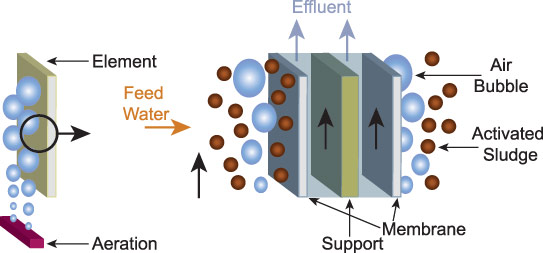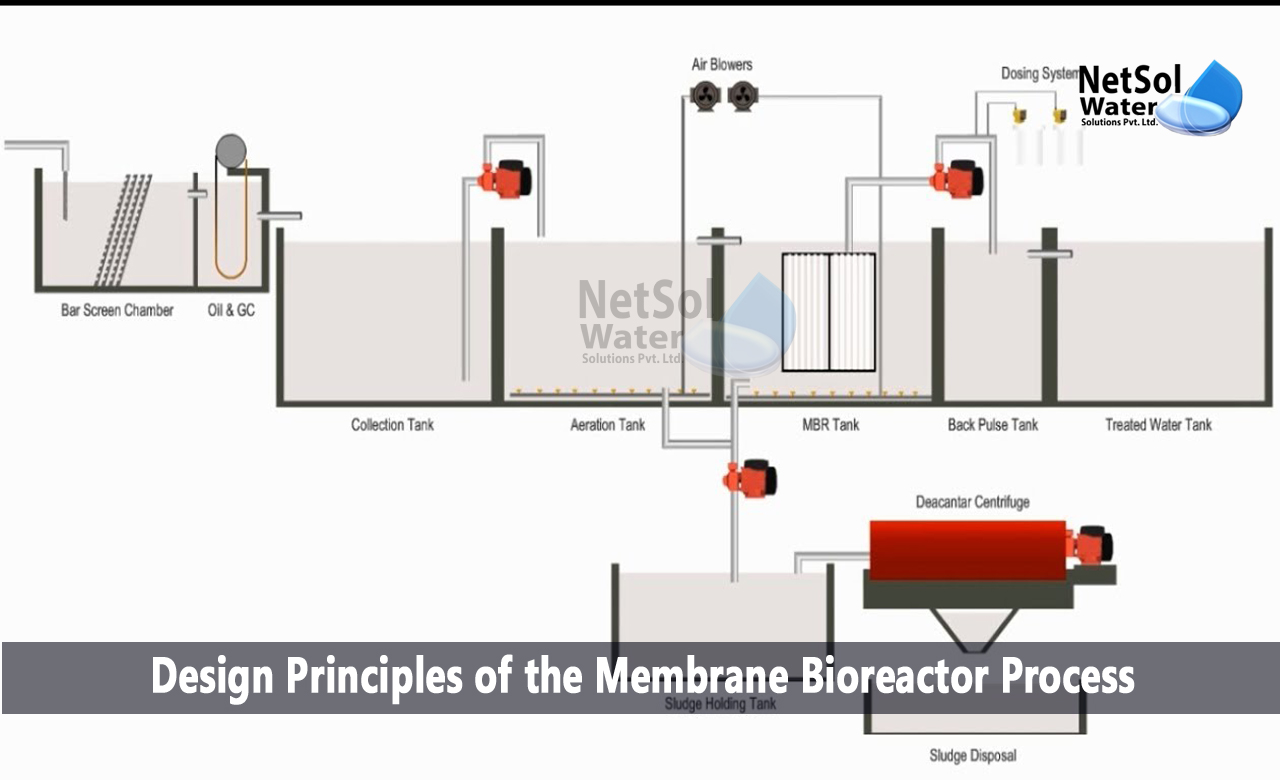How Membrane Bioreactors Are Transforming Water Filtration Equipments
The emergence of membrane bioreactors (MBRs) stands for a significant development in the field of water purification, combining organic therapy procedures with sophisticated membrane purification technologies. This integration not only enhances the quality of treated effluent but also addresses urban area restrictions, making MBRs particularly appropriate for largely booming locations. As international water deficiency escalates, the role of MBRs in facilitating potable water reuse and lasting water monitoring comes to be significantly important. Yet, the effects of this modern technology prolong beyond efficiency-- what possibilities and difficulties lie ahead for its prevalent application?
Introduction of Membrane Bioreactors
Membrane bioreactors (MBRs) stand for a significant improvement in water filtration innovation, as they incorporate biological treatment procedures with membrane layer filtration. This combination boosts the efficiency of wastewater therapy by making use of microorganisms to deteriorate natural pollutants while concurrently using semi-permeable membranes to separate treated water from put on hold pathogens and solids.
The MBR system usually is composed of a biological reactor where the microbial population metabolizes pollutants, adhered to by a membrane filtration system that maintains biomass and permits just tidy water to travel through. This dual functionality results in higher effluent high quality compared to traditional therapy techniques. MBRs can be run in both set and constant circulation settings, using versatility in style and application.
In Addition, MBRs are identified by their portable impact, making them appropriate for metropolitan setups with area restrictions. Membrane Bioreactor. They likewise enable the recovery of water for reuse, thus contributing to water sustainability campaigns. While MBR modern technology has actually gotten appeal in industrial and municipal applications, its functional intricacies and energy demands demand mindful factor to consider during implementation. Overall, MBRs go to the leading edge of enhancing water treatment performance and high quality, showcasing the potential for innovative options in environmental monitoring.
Advantages of MBR Modern Technology
The combination of organic treatment with membrane layer filtering offers many advantages for water filtration procedures. One of the main benefits of Membrane layer Bioreactor (MBR) technology is its ability to effectively eliminate both not natural and organic pollutants, leading to top notch effluent. The membranes function as a physical obstacle, avoiding put on hold solids and pathogens from going through, which boosts the overall security and integrity of cured water.
Additionally, MBR systems need a smaller sized impact contrasted to standard treatment techniques, permitting for more efficient area application. This portable design is especially helpful in city setups where land is restricted. MBRs also demonstrate operational versatility, fitting differing influent high qualities and circulation prices without substantial efficiency destruction.
Furthermore, the process offers enhanced nutrient removal capabilities, particularly for nitrogen and phosphorus, which are vital for stopping eutrophication in getting waters. The minimized sludge manufacturing connected with MBR innovation likewise equates to reduce disposal costs, making it an economical option over time - Membrane Bioreactor. In general, the advantages of MBR technology placement it as a leading selection for sustainable and ingenious water filtration systems, resolving both ecological and financial issues
Applications in Water Purification
Applications of Membrane Layer Bioreactor (MBR) modern technology in water filtration are impactful and diverse, attending to different treatment needs across several markets. MBRs successfully combine organic therapy processes with membrane layer filtering, making them optimal for municipal wastewater therapy, industrial effluent management, and also potable water reuse campaigns.
In community setups, MBRs are significantly employed to improve the top quality of dealt with wastewater, permitting compliance with rigid discharge laws and helping with the recycling of water for irrigation and non-potable usages. Their small layout additionally makes them suitable for urban atmospheres where area is restricted.
Industrially, MBR modern technology is made use of to deal with procedure water and wastewater, particularly in sectors such as food and beverage, pharmaceuticals, and textiles. By efficiently eliminating pollutants and suspended solids, MBRs assist markets lessen environmental impacts while recovering important resources from wastewater streams.
Furthermore, MBRs are acquiring traction in decentralized water treatment applications, where small systems can be released in remote locations or establishing regions. This adaptability enables communities to attain lasting water administration options, improving access to tidy water while lowering dependence on standard treatment methods.
Study and Success Stories

In an additional instance, a fabric production facility in Bangladesh adopted MBR technology to address its wastewater difficulties. The system minimized chemical oxygen need (COD) degrees from 1,200 mg/L to much less than 100 mg/L, hence meeting regulatory standards and considerably lessening ecological effect.
The College of Cape Town's MBR setup has check this site out shown efficient in treating greywater for non-potable reuse on school. This project not only conserves potable water but additionally functions as an instructional version for lasting methods.
Moreover, a seafood processing plant in Norway utilized MBR modern technology to deal with effluents consisting of high levels of raw material, attaining over 90% contaminant removal. These study emphasize MBR innovation's adaptability and its important role in boosting water high quality across varied applications.
Future of Water Therapy Solutions
As global water deficiency and air pollution difficulties magnify, cutting-edge water therapy services are coming to be progressively necessary to ensure lasting access to tidy water. The future of water treatment depends on the integration of innovative innovations that enhance the efficiency and efficiency of purification procedures. Membrane bioreactors (MBRs) go to the forefront of this development, combining biological therapy with membrane filtering to create high-grade effluent ideal for different applications.

Arising patterns such as resource recovery from wastewater, consisting of nutrients and power, will further change therapy facilities into eco-friendly centers. Moreover, developments in nanotechnology and membrane products guarantee improved efficiency and durability of filtration systems.

Conclusion
In conclusion, membrane bioreactors represent a considerable improvement in water purification innovations, successfully integrating organic treatment with sophisticated membrane filtration. The various advantages, including boosted effluent top quality and lowered spatial needs, make MBRs specifically ideal for city applications. Their function in drinkable water reuse and sustainable water management highlights their importance in resolving international water shortage difficulties. Continued research and development will certainly additionally improve the efficacy and fostering of MBR innovation, guaranteeing a resilient future for water therapy options.
The introduction of membrane bioreactors (MBRs) stands for a significant improvement in the field of water purification, combining biological therapy procedures with advanced membrane layer filtration modern technologies. As global water shortage magnifies, the function of MBRs in facilitating drinkable water reuse and lasting water management ends up being significantly crucial. They likewise make it possible for the recovery of water for reuse, therefore adding to water sustainability campaigns.As global water shortage and air pollution obstacles magnify, ingenious water therapy remedies are becoming progressively necessary to make certain lasting access to clean water. Their role in drinkable water reuse and sustainable water administration highlights their value in resolving international water scarcity challenges.
Comments on “Troubleshooting Common Issues with Membrane Bioreactor Systems”